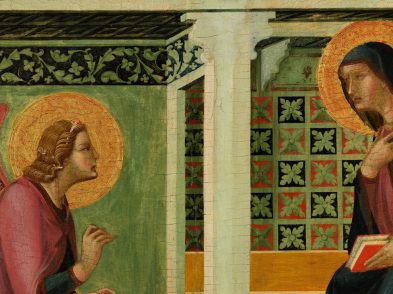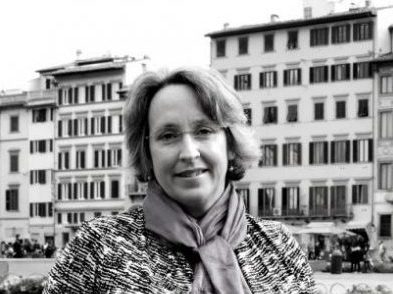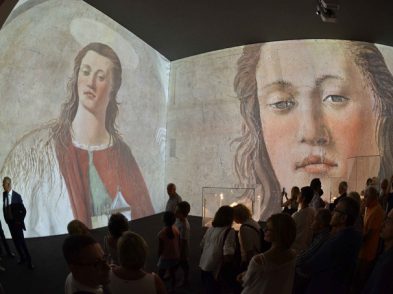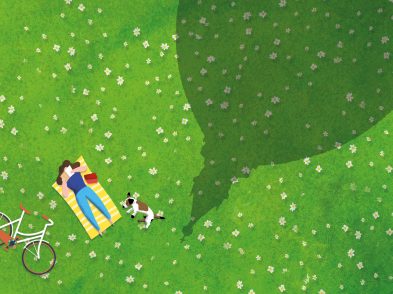In 1996, Frances Mayes published Under the Tuscan Sun, a memoir about buying, renovating and living in an abandoned villa in rural Cortona. It went to number one on the New York Times bestseller list, where it remained for over two years, and in 2003, was made into a film of the same name, starring Diane Lane. Our correspondent Oonagh Stransky, who lives year round in Cortona, interviewed Mayes for The Florentine.
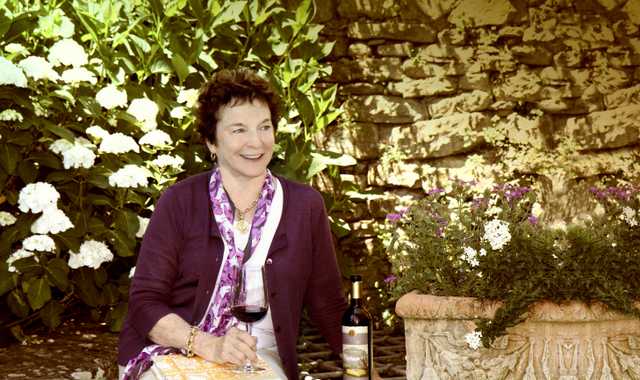
Oonagh Stransky: How much time do you spend in Cortona these days?
Frances Mayes: We come and go. We just were there for the olive harvest. Altogether, we’re there for about five months a year.
OS: What do you do while in Tuscany?
FM: I walk the Roman roads. Recently I’ve taken up listening to books as I walk. We live close to town so I walk in for a cappuccino, then take a circuitous route back to Bramasole, my house.
OS: What advice would you give visitors to Cortona—what should they be sure to see?
FM: For sure, the museums. Most foreigners don’t know much about the Etruscans, and visitors are enchanted by the range of artifacts. No one should miss the Annunciation angel of Fra Angelico. I love her neon orange hair! Walking the secret upper neighborhoods of Cortona gives you a chance to step back in time.
OS: Is there anything you would change about Cortona?
FM: Of course. No place is perfect. But I’ll wait until asked for my grand schemes!
OS: Under the Tuscan Sun is associated with “living the dream,” and although you point out some hardships in doing so, they always lead to personal growth. Can we hear Frances Mayes complain about something in Tuscany, just this once?
FM: Too much “noi” (we) and not enough “voi” (you).
OS: While Cortona has remained a particularly lively town thanks to cultural initiatives and the presence of schools that help retain the populace, other towns have been less able to preserve this nature. What do you think Tuscany must do to maintain its livability?
FM: There’s something that skews this question, and I’ll say, in all modesty and just as fact, that a lot of Cortona’s good fortune comes from my books! Everywhere I go in Italy, people say, “Cortona is so lucky. PLEASE write a book about this town.” My books about Cortona are in 54 languages, so much of the influx, life and economy result from the thousands and thousands of people who come here seeking that Tuscan sun. The movie of the book, too, is all over the world and many come expecting Diane Lane. Expecting the fountain in the piazza. I can always tell when a new book edition has been published because suddenly we have Brazilians, Estonians or Chinese taking pictures at our gate. We have sometimes 200 visitors a day coming by our house. We’ve been privileged to meet people from everywhere. Even in winter, there’s a steady stream. Other towns that have started local festivals (sometimes, sadly, very poorly attended) don’t have this extra thing that lures the traveler. Cortona is well positioned to enjoy their advantage. The local people are exceptionally friendly to visitors. Hundreds of people have told me how at home they feel here. We’re lucky to have so many places to dine and wine, such a liveable centro. I often feel that I’m in a large living room.
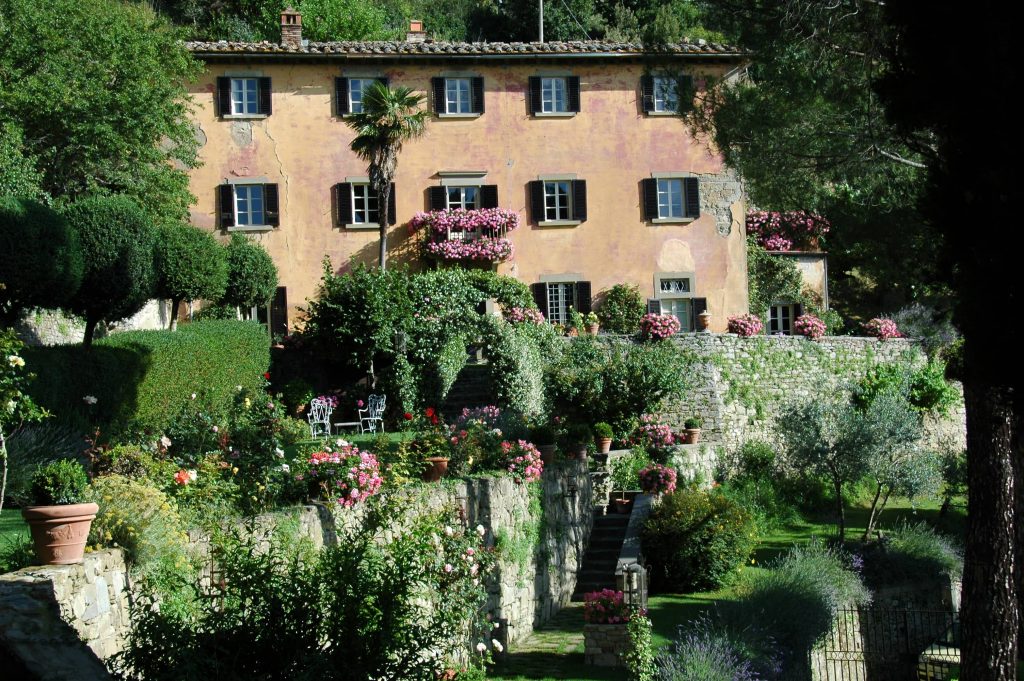
Bramasole, Mayes’ Cortona home
For lovely places such as Castiglione del Lago, Lucignano, Città di Castello, even Arezzo, there’s a different world as far as tourism is concerned. The best thing is to develop a town as a fantastic place for the residents to live: promote artisan crafts and products, create parks, clear the piazze of cars, encourage good new businesses with tax breaks, observe strict zoning laws and architectural review, keep out trashy shops, do not post signs in English, keep a lively weekly market and do not depend on tourism. (I know: easier said than done.) Small towns all over the world struggle to thrive when cities lure away so many talented people. But there’s a certain traveler who looks for places where there are not a lot of tourists, places that maintain their essential Italian nature. I’m writing a book about just those towns, my favorite hundred secret places in Italy. I began with some of the islands of the Venetian lagoon (see the article in Smithsonian Journeys, Winter 2015.) I’m so looking forward to all the travel.
OS: How has Cortona changed since you wrote Under the Tuscan Sun?
FM: Cortona was somber and quiet 25 years ago. Now it’s lively and thriving. Almost no one spoke English then. I think most of the change has been for the good—more art, more fine dining and wine awareness, some quality shops. It’s understandable that young families prefer newer housing, but I do regret that the centro has lost so many to the apartment complexes outside town. I love being in Cortona in the winter because it’s like it used to be, but I love, too, the activity of summer with the wine dinners and the music festivals and friends coming to visit.
OS: Any advice to young writers?
FM: Go work for Google. No, not really. My best advice is this: (1) apprentice yourself to excellent writers and read their work for pleasure, yes, but also read them again to see how the work is constructed, how the language is used, what characterizes the voice, what makes you love it, what could be better, and do a close analysis; (2) write what you want, not what you think will sell (sometimes those can overlap!), write to discover and tell yourself something that you want to hear; (3) listen to criticism as though it is true, and look at your work in light of the criticism and see if you can improve from it—if not, forget it; and (4) find a writer friend or two, or better, join a writing group—you might not improve from workshopping, but having a supportive atmosphere in a world where no one is telling you to write is of great comfort.
OS: How do you feel about your book’s title becoming such a catchphrase?
FM: I still see it everywhere, even after all these years. It’s funny. Sometimes it’s “Under the Tucson Sun,” “Under the Santa Barbara Sun.” Recently at Feltrinelli bookstore, I saw a stack of mystery books with the sign, “Under the Yellow Sun” [ed. un romanzo giallo is the term used for a detective novel, derived from the signature yellow binding of one of the Italian publishers of the genre]. Some book titles, such as Too Much Tuscan Sun, pop up. Personally, I would want an original title for a book I wrote, not a rip-off of someone else’s, but it really doesn’t bother me. Lots of houses and businesses too have also appropriated the name of my house, Bramasole.
OS: What are you writing these days?
FM: I have three book projects underway—a novel, a non-fiction book about houses and a travel book. There’s another cookbook I’d like to write, but where’s the time?
OS: What do you think of Jhumpa Lahiri writing in Italian with a translation by Ann Goldstein?
FM: I read the Lahiri book and so enjoyed it because the Italian was simple enough for me to read! What a gift she gave herself—two solid years to do nothing but study Italian. I so envy that. I tried reading Ferrante in Italian. Hard going!
OS: Any book recommendations about contemporary Italy?
FM: I can’t say I exactly enjoyed them, but I read the Saviano books. Like everyone else, I devoured the four Ferrante books. I don’t read much social science or political stuff. (Italian politics is almost as discouraging as American politics.) Some of my favorites through the years I’ve been here are Eco, Calvino, Pavese, Sciascia, Montale, Moravia, Pasolini, Levi and the earlier novels of Ferrante. Close to home, among many, many books by foreigners about Italy, I deeply admire Ann Cornelian, who lived for more than 20 years in Cortona. I hope she is remembered for Torregreca, Women of the Shadows, Where It All Began, and the spoof Any Four Women Can Rob the Bank of Italy. And also the indefatigable Claire Sterling, who from her hunting lodge near Pergo wrote (to international attention) The Terror Network, The Time of the Assassins, Octopus: The Long Reach of the International Sicilian Mafia, all hot topics that plague us even more now than when she investigated them in the 70s and 80s. Germaine Greer was her neighbor. What a group of amazing writers around here when I arrived in 1990! Muriel Spark over in Monte San Savino, William Weaver, Lyndall Hopkinson Passerini…
Buy Frances Mayes’s new book, Always Italy.

This lush guide, featuring more than 350 glorious photographs from National Geographic, showcases the best Italy has to offer from the perspective of two women who have spent their lives reveling in its unique joys. In these illuminating pages, Frances Mayes, the author of Under the Tuscan Sun, and New York Times travel writer Ondine Cohane reveal an Italy that only the locals know, filled with top destinations and unforgettable travel experiences in every region.
Tune in…
On Friday May 8, 2020, at 5pm, Frances Mayes will chat about her new book, Always Italy, with TF’s Alexandra Korey.
Where to watch: This event will take place on Facebook live and stream on YouTube.


